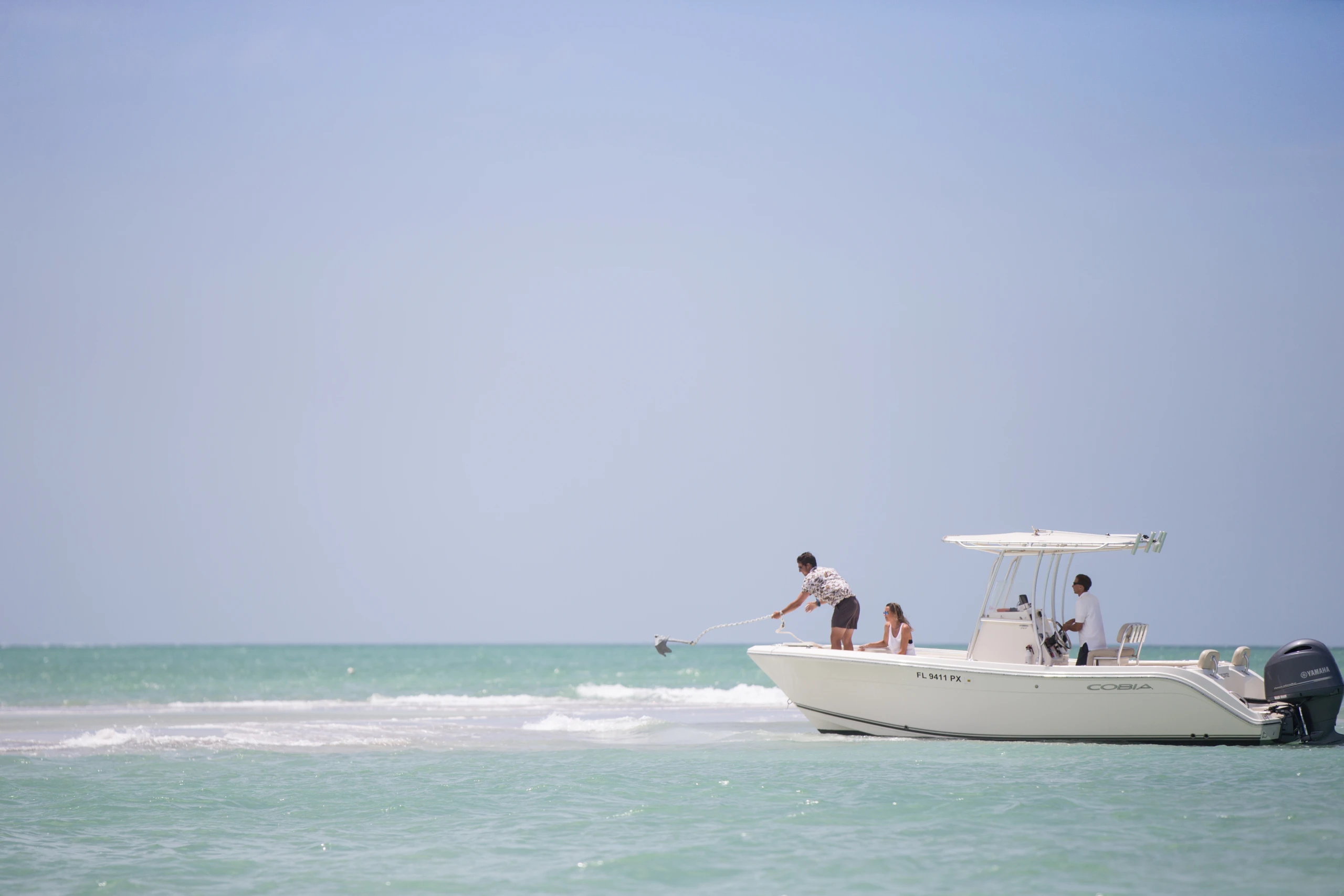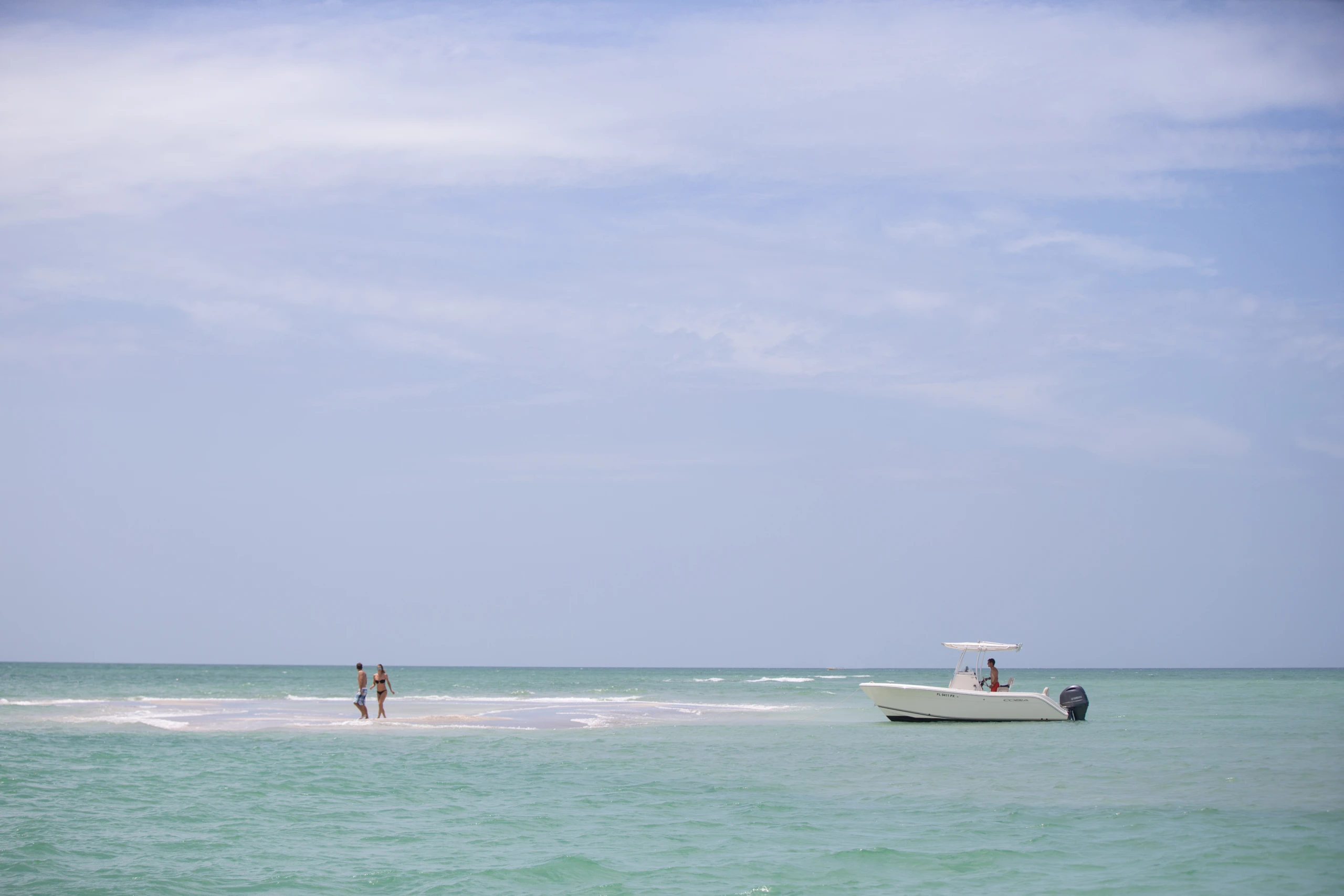
What is the proper technique for anchoring? Learn how to anchor your boat and more in this boating test guide!
In the vast expanse of water, the simple act of anchoring holds significant importance for boaters, whether they’re novices or seasoned sailors. Anchoring isn’t just about securing your vessel—it’s a fundamental skill that ensures safety, stability, and peace of mind while on the water. In our comprehensive boating test guide, we delve into the proper techniques for anchoring, providing invaluable insights and actionable tips to help you master this essential aspect of boating. Whether you’re preparing for your boater licensing exam or seeking to enhance your knowledge as an experienced boater, our guide is your ultimate resource for learning how to anchor your boat effectively and confidently.
Table of Contents
- What is the proper technique for anchoring?
- How to anchor a boat:
- Which of the following should you do when anchoring?
- From which part of the boat should you lower the anchor line?
- What could happen if you anchor a boat from the stern?
- What is the best way to anchor your boat?
- From what side of the vessel should you never anchor?
- Where should you avoid anchoring?
- What is the proper method for lowering an anchor?
- When choosing an area to anchor your vessel what factors should you keep in mind?
- To avoid swamping your boat where should you slowly lower the anchor?
- What is the major danger of anchoring a fishing boat from the stern?
- Check out our other study guides for boating test questions:
- Getting Certified: Passing your boat exam
What is the proper technique for anchoring?
The proper technique for anchoring is to first, select a suitable anchorage area with adequate depth and good holding ground. Then, approach the chosen spot slowly, facing into the wind or current. Then, lower the anchor using the appropriate technique for your vessel. Once the anchor is set, gently pull on your anchor line to ensure it has securely dug into the seabed, and then secure the rope to bow of your boat using the cleat.
There are several steps in the proper technique for anchoring that all boaters should be familiar with to ensure stability and safety on the water:
- Choose the Right Location: Select a suitable anchorage with good holding ground, shelter from wind and waves, and enough depth for your vessel.
- Prepare the Anchor: Ensure the anchor is clean and free of debris. Attach the anchor to the anchor line (also known as rode) securely.
- Approach the Anchorage: Approach the anchorage slowly and carefully, taking into account wind and current direction.
- Determine Depth: Use a depth sounder or lead line to determine the depth of the water where you plan to anchor.
- Drop the Anchor: Lower the anchor overboard from the bow of the vessel. Pay out enough anchor line to reach the desired scope (usually 5-7 times the depth in calm conditions).
- Set the Anchor: Once the anchor has reached the bottom, allow the vessel to drift back slowly while paying out more anchor line. Set the anchor by gently backing down on it using the engine in reverse.
- Check Holding: After the anchor is set, confirm that the vessel is holding position securely by observing landmarks on shore or using GPS.
- Secure the Rode: Once confident in the anchor’s holding, secure the anchor rode to a cleat or other strong point on the vessel, taking care to prevent fouling.
- Monitor Position: Keep an eye on your position relative to nearby vessels and landmarks, adjusting as necessary to maintain a safe distance.
- Retrieve the Anchor: When ready to depart, retrieve the anchor by reversing the steps above in reverse order, taking care to lift the anchor vertically to avoid damaging the seabed.
By following these steps and practicing proper anchoring techniques, boaters can anchor safely and confidently in a variety of conditions.
Here are more common questions that you should be aware of before taking your boating test. We will review all of the other scenarios that determine the direction a PWC will travel.
How to anchor a boat:
If you want to know how to anchor a boat, or are looking for study guides for your boat test, remember to follow these steps to anchor your boat properly:
- Choose a suitable anchorage area with sufficient depth and good holding ground.
- Approach the chosen spot slowly, facing into the wind or current.
- Lower the anchor over the bow using the appropriate technique for your vessel, ensuring it reaches the bottom.
- Allow the boat to drift back while paying out anchor rode until the desired scope is achieved.
- Once the anchor is set, back down gently to ensure it digs securely into the seabed.
- Finally, secure the anchor rode to the boat’s bow cleat and monitor for any signs of dragging.
For more details on how to anchor a boat, check out Boat-Ed’s Free Study Guide.

Which of the following should you do when anchoring?
When you take your boat certification test, you are likely to be asked “which of the following should you do when anchoring”. To help you prepare, keep in mind that when anchoring, you should:
- Select a suitable anchorage with adequate depth and good holding ground.
- Lower the anchor slowly while slowly backing the boat into the wind or current.
- Allow the anchor to set firmly into the seabed by applying reverse throttle or letting out additional rode.
- Check the anchor’s position and ensure it is securely holding the boat in place.
- Monitor the anchor and boat position regularly, especially in changing weather or tidal conditions.
From which part of the boat should you lower the anchor line?
You should lower the anchor line from the bow of the boat. This allows for better control and maneuverability during the anchoring process.
The bow, also known as the front, of the boat is the best place to lower the anchor line. The back of the boat, also known as the “stern” is not the part of the boat you should lower the anchor line because it is possible your anchor line will get tangled in your propellor. It also makes retrieving your anchor more difficult.
What could happen if you anchor a boat from the stern?
Anchoring a boat from the stern can cause several issues. Firstly, it can lead to the boat swinging unpredictably in changing wind and current conditions, increasing the risk of collisions or entanglements with other vessels or obstacles. Additionally, anchoring from the stern can cause the boat to drift in a way that makes it difficult to retrieve the anchor, potentially leading to damage or loss of the anchor and line. Finally, anchoring from the stern may not provide sufficient stability for the boat, especially in rough waters, increasing the risk of capsizing or swamping.
What is the best way to anchor your boat?
The best way to anchor your boat is to follow these steps:
- 1. Choose a suitable anchorage with enough depth and proper holding ground.
- Approach the anchoring spot slowly against the wind or current.
- Lower the anchor from the bow of the boat, using the appropriate amount of anchor rode (line or chain).
- Allow the boat to drift back while paying out the anchor rode until the anchor reaches the seabed.
- Set the anchor by gently reversing the boat’s engine while maintaining tension on the anchor rode.
- Secure the anchor rode to a cleat or other suitable anchoring point on the boat.
- Monitor the boat’s position to ensure it remains securely anchored, adjusting as necessary.
By following these steps, you can anchor your boat safely and effectively in a variety of conditions.
From what side of the vessel should you never anchor?
You should never anchor from the stern (rear) of the vessel. Anchoring from the stern can lead to the boat swinging unpredictably with changes in wind or current, increasing the risk of collision or entanglement with other vessels or obstacles. Additionally, anchoring from the stern can make it more difficult to control the boat’s position and may compromise the effectiveness of the anchor in holding the vessel in place.
Where should you avoid anchoring?
You should avoid anchoring from the stern (rear) of the vessel. This practice can lead to unpredictable boat movements and compromise the effectiveness of the anchor, increasing the risk of collision or entanglement with other vessels or obstacles.
What is the proper method for lowering an anchor?
The proper method for lowering an anchor involves first ensuring that the boat is positioned into the wind or current, then lowering the anchor slowly from the bow (front) of the vessel. As the anchor descends, pay out enough anchor line to allow it to reach the bottom without dragging along the surface. Finally, secure the anchor line to a cleat or other designated anchor point on the boat to hold the vessel in place.
When choosing an area to anchor your vessel what factors should you keep in mind?
When choosing an area to anchor your vessel, several factors should be kept in mind:
- Water depth: Ensure that the water depth is sufficient for the anchor to reach the bottom without dragging.
- Bottom type: Consider the composition of the seabed, as certain types of bottoms (such as sand or mud) provide better holding for anchors.
- Protection from wind and waves: Select an area that offers protection from prevailing winds and waves to minimize the risk of the boat dragging anchor.
- Nearby hazards: Be aware of any underwater hazards, such as rocks or reefs, that could pose a danger to your vessel.
- Distance from other vessels: Anchor a safe distance away from other boats to avoid potential collisions or interference with their anchor lines.
- Currents and tidal flow: Take into account the direction and strength of currents and tidal flow, as these can affect the boat’s position and swing radius.
- Accessibility to shore: Choose an anchorage that provides convenient access to shore if needed for activities like swimming or dinghy access.
We recommend using a boat navigation app to help you easily see the current water depths, wherever you’re exploring. The Wavve Boating App combines the current water levels, tidal data, and nautical charts into one easy to read boating map. Try it for free today!
To avoid swamping your boat where should you slowly lower the anchor?
To avoid swamping your boat, you should slowly lower the anchor from the bow (front) of the vessel. This allows the boat to maintain stability and reduces the risk of water entering the boat, especially in rough conditions or high waves. Lowering the anchor from the bow also helps to control the boat’s position and prevents it from drifting unexpectedly while anchoring.
What is the major danger of anchoring a fishing boat from the stern?
The major danger of anchoring a fishing boat from the stern is the risk of swamping or flooding the vessel. Anchoring from the stern can cause the boat to be vulnerable to waves and water entering the stern, especially in rough conditions or high waves. This can lead to instability, loss of control, and potentially capsizing or sinking of the boat.
Check out our other study guides for boating test questions:
- What is draft on a boat?
- How to choose a marine gps app
- The 5 best boating weather apps for 2024.
Getting Certified: Passing your boat exam
Start your safe boating journey at boat-ed.com. Their accredited courses, recognized by NASBLA, the National Association of State Boating Law Administrators, make learning boater safety, etiquette, and water rules easy and accessible. With interactive courses available on all devices, prioritize safety as you prepare for your exam.
You can get a preview of what this, and other questions may look like on a boating test by visiting our friends at Boat-Ed. Check out their study guide.








